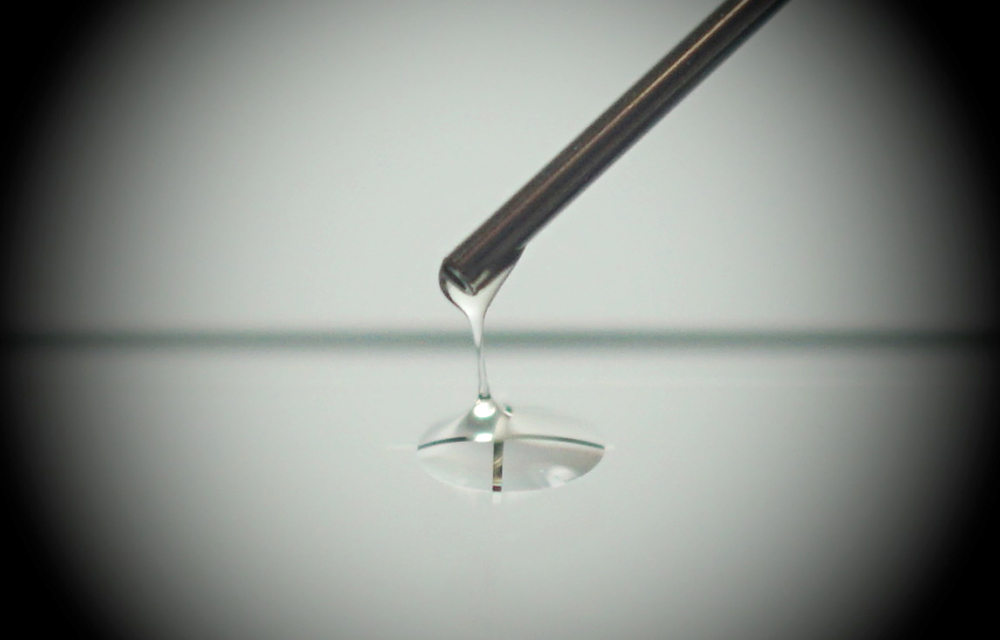An LED that has been positioned with great effort and micrometer accuracy still has to be securely fixed. Bonding in the precision area has many advantages, but also its pitfalls. During curing, the adhesive shrinks and thus pulls on the parts to be joined, which can result in a displacement of several micrometers. If light is injected into a waveguide, this leads to a significant deterioration in performance.
The Institute of Assembly Technology (match) is working in the Cluster of Excellence PhoenixD on simulation models to predict adhesive shrinkage and thus the effect on the assembly position.
The origin lies in chemistry
Adhesives shrink in volume because the atoms move closer together during curing when several small molecules (monomers) form long molecular chains (polymers).
Although a simulation at the molecular level is possible, it is not easily transferable to the technical size level because additional effects occur here. For volumes in the microlitre range, the smallest air bubbles, the local distribution of reaction substances and the type of energy input must also be considered. Especially with UV-curing adhesives, the energy intensity and the direction of irradiation play an important role.
Hardly detectable influences make the simulation difficult
The first step is to identify process-relevant influences – because it is almost impossible to consider all influencing factors in FEM or multiphysics simulation models. To this end, the scientists are using match to set up an example process in which the component position can be observed during curing. At the same time, a simulation model is created and the real process conditions are mapped in it. In the subsequent steps, the simulation model is adjusted to such an extent that the adhesive shrinkage and the resulting component distortion correspond to the real measurements.
It is then possible to use the model for the preliminary design of further bonding processes and to predict the positional deviation that will occur so that this can be taken into account in the process design. In general terms, this means that the component is deliberately "misplaced" and only when it is bonded does it slide into the correct position.
Industry 4.0 opens up the full potential
Progressive digitization opens up even more fields of application. Within the framework of Industry 4.0, machines are connected and exchange process data. Data analysis makes it possible to create a virtual model, which can then be expanded to include the simulation of the joining process. This allows better predictions about the quality of the product.
On the one hand, these more accurate predictions can be used for an adaptive assembly process – i.e. previously known tolerances are compensated by a controlled bonding process. On the other hand, the quality of the joining connection can also be calculated, which eliminates the need for time-consuming checks of each product for classification into quality classes. Consequently, a general increase in quality and productivity can be expected.
